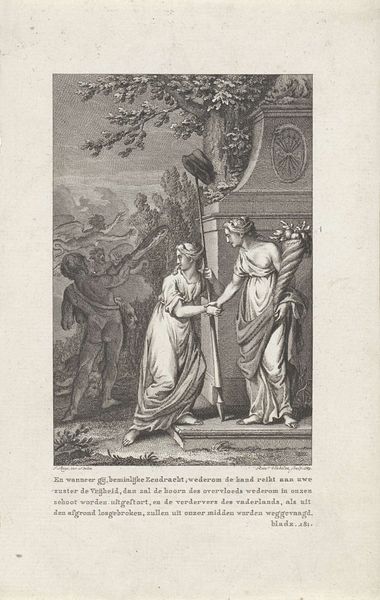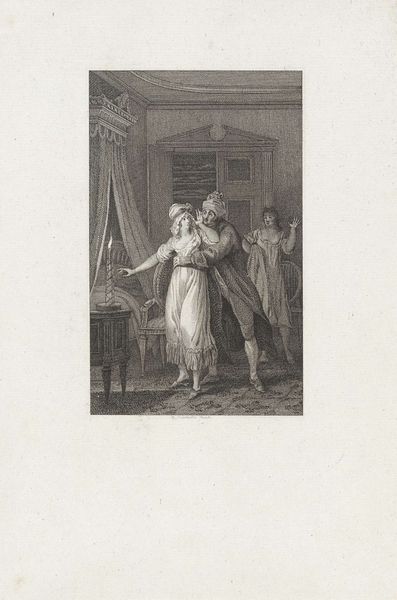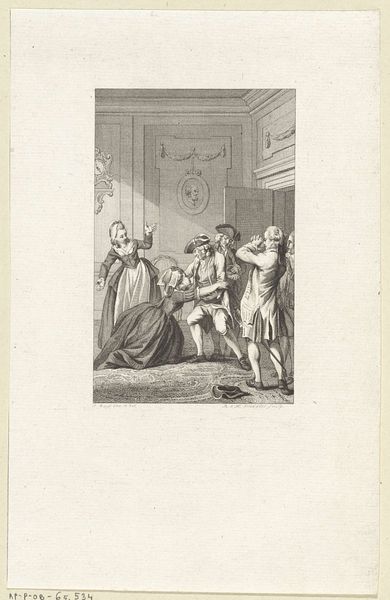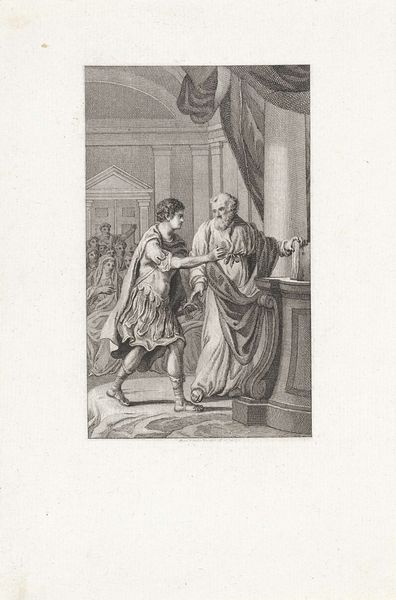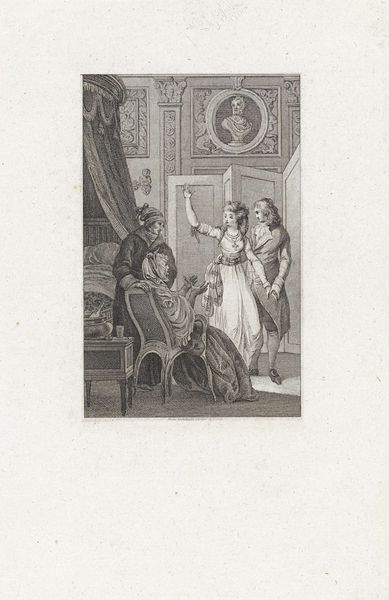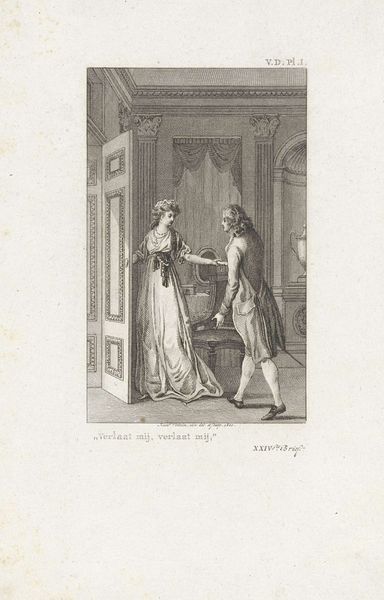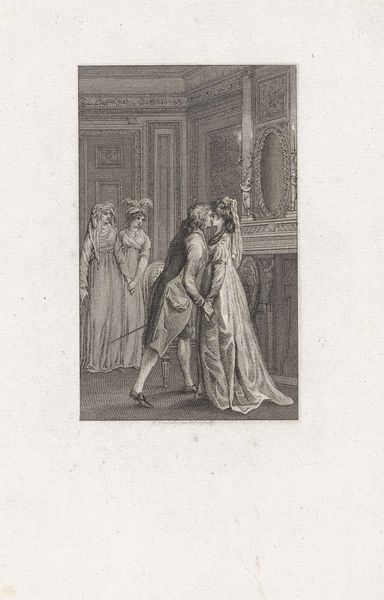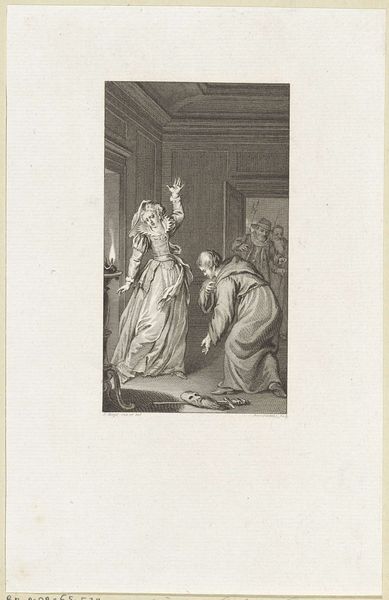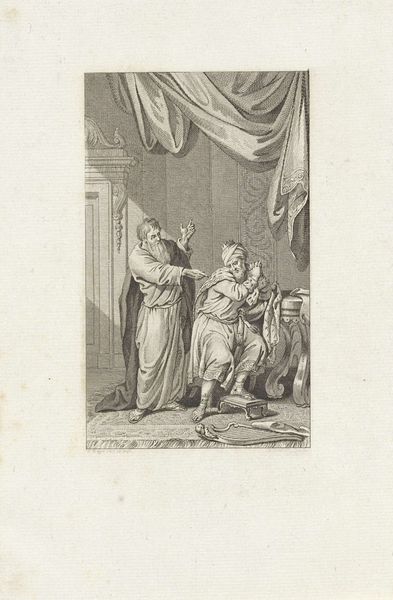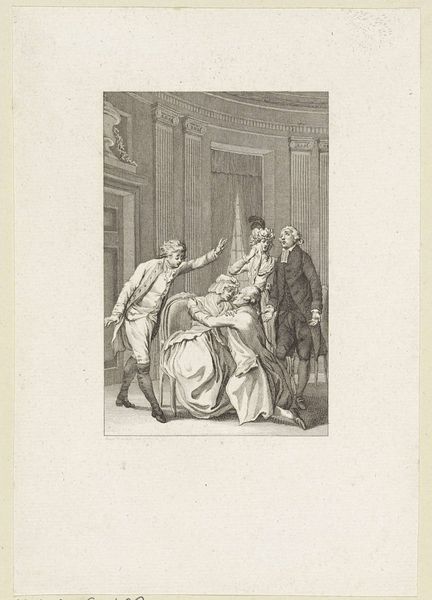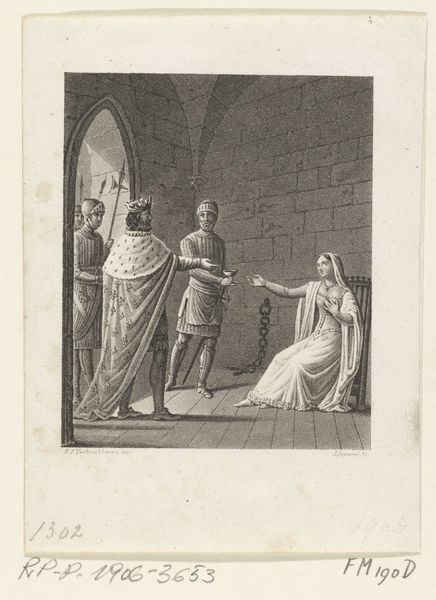
print, engraving
#
neoclacissism
#
narrative-art
# print
#
old engraving style
#
classical-realism
#
historical photography
#
pencil work
#
history-painting
#
engraving
Dimensions: height 209 mm, width 133 mm
Copyright: Rijks Museum: Open Domain
Ludwig Gottlieb Portman made this print, "Death of Monima," using a technique that allows for the mass production of images: etching. The image is created by drawing into a waxy ground on a metal plate, then bathing it in acid. The lines bitten by the acid hold ink, which is then transferred to paper under great pressure. Consider the labor that goes into this process: the careful preparation of the plate, the controlled application of acid, and the repetitive work of printing. This was not a unique artwork like a painting, but a commodity, meant to be circulated and consumed. The use of etching democratized image-making, making art more accessible to a wider audience. The print's graphic style, with its crisp lines and dramatic lighting, reflects the aesthetics of the late 18th and early 19th centuries, a period of great social and political change. The print medium itself becomes a vehicle for disseminating ideas and stories. It challenges our understanding of artistic value, inviting us to consider the social and economic forces that shape the art world.
Comments
No comments
Be the first to comment and join the conversation on the ultimate creative platform.
